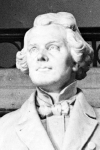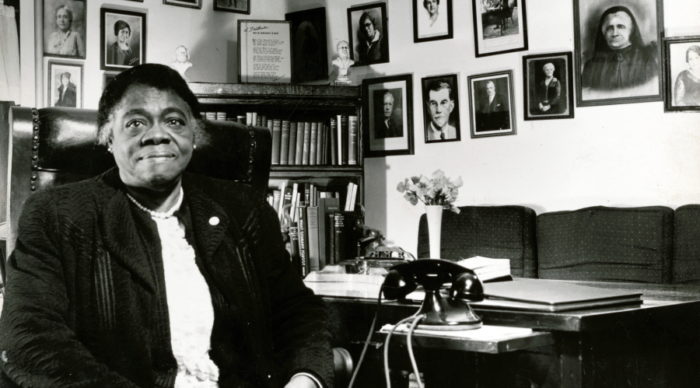
As far as I can tell, the first piece I wrote for The Hill is Home (or the first one that is still in our archives) ran on July 7, 2009. 10 years on, I want to look again at the subject of that column: Mary McLeod Bethune.
Well-known to all the kids in the Lincoln Park area as the subject of the other statue in Lincoln Park, Mary McLeod Bethune was an educator born of formerly enslaved parents. Her love of learning showed early, when as the first of her parents’ children to go to school, she would race home to teach her older siblings what she had learned. Convinced that education was the key to true emancipation, she founded a school that is today Bethune-Cookman University. She was thus exactly the appropriate counterpart to the problematic but historic statue of Abraham Lincoln that had been placed a mile east of the Capitol in 1876.
But that is not what is important today. Instead, it was the decision of the state of Florida to give her a much more prominent statue here in Washington D.C. – in the Capitol itself. Since 1864, every state has had the right to send two statues to be part of the National Statuary Collection. According to the law, the statues must be “in marble or bronze, not exceeding two in number for each State, of deceased persons who have been citizens thereof, and illustrious for their historic renown or for distinguished civic or military services such as each State may deem to be worthy of this national commemoration.”

Many of the statues originally sent have turned out to be problematic, either because of the subjects’ actions or because they have become utterly lost to history. This is why it is good that states can replace statues at any time, and many have taken advantage of this over the years.
One of Florida’s statues – that of John Gorrie (pictured above), the father of mechanical cooling and thus air conditioning – is entirely unproblematical and, in fact, given how much the state depends on this invention, utterly appropriate. It is the other statue where issues arise: it is a statue of Edmund Kirby Smith, whose main claim to fame is that he was the last of the Confederate generals to surrender – and the last Civil War general from either side to die.
In 1918, the state of Florida decided that this was just the man to represent them in the “Hall of Fame,” as the Chattanooga News described it on August 30 of that year. Otherwise, there seems to have been little notice of this event – the Washington Post ignored this new addition to the Capitol entirely.
A little more attention was paid four years later, when Congress “Formally accepted” the statue, as the Pensacola Journal of March 3 1922, wrote. They also printed in full the address given by Senator Duncan U. Fletcher of Florida, in which he extolled Smith’s service, including quoting a resolution by the congress of the Confederate states “for his matchless display of skill and bravery.”
Smith is, in short, exactly the sort of person that should be allowed to disappear into the dustbin of history, and Mary McLeod Bethune is exactly the one to replace him. Her tireless work to improve the lives of all people contrasts starkly with the work of someone whose primary claim to fame are his efforts to keep a large percentage of the population enslaved.
When, exactly, we will be able to see the new Bethune statue on Capitol Hill remains uncertain, but it will hopefully be sooner rather than later.
